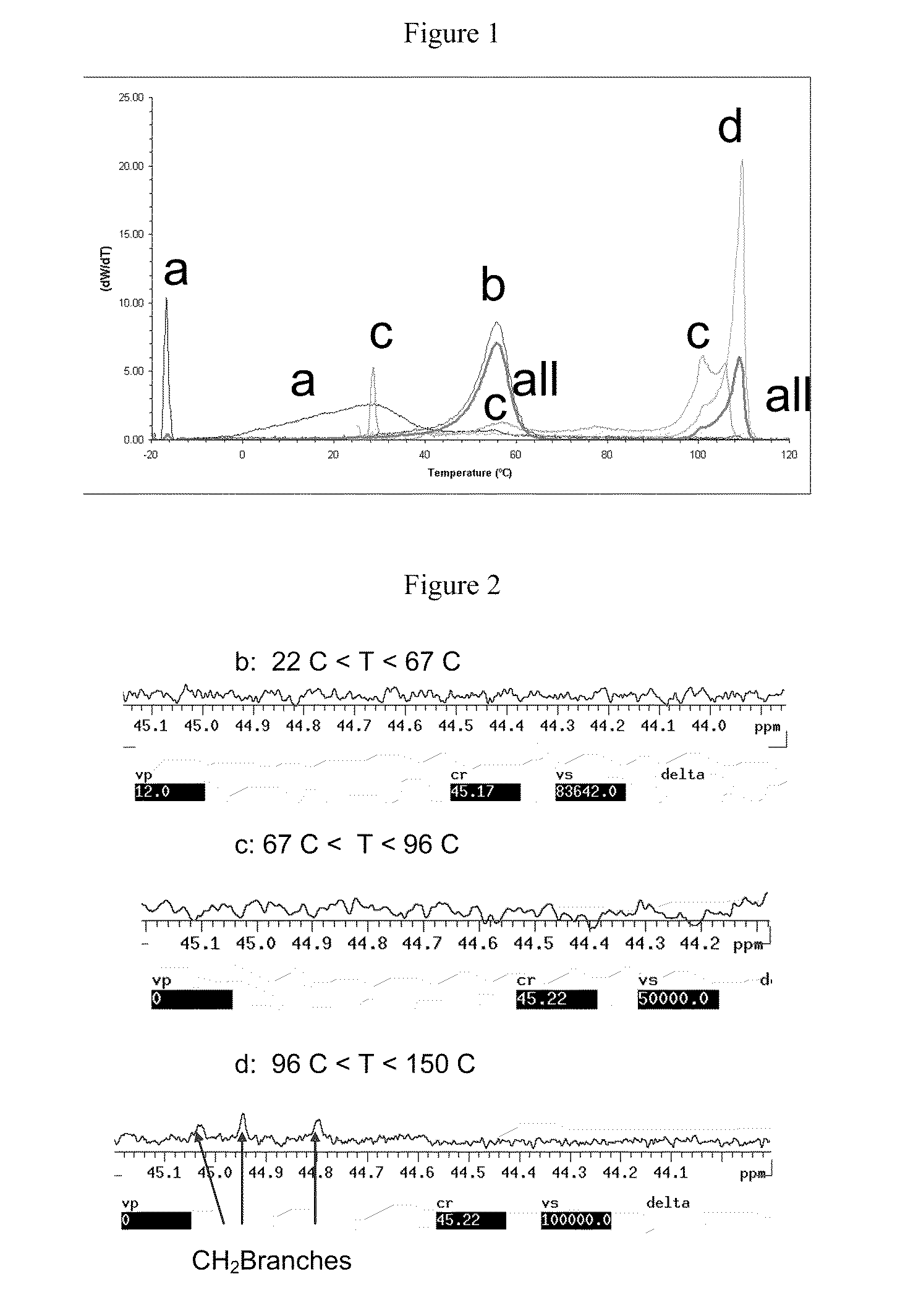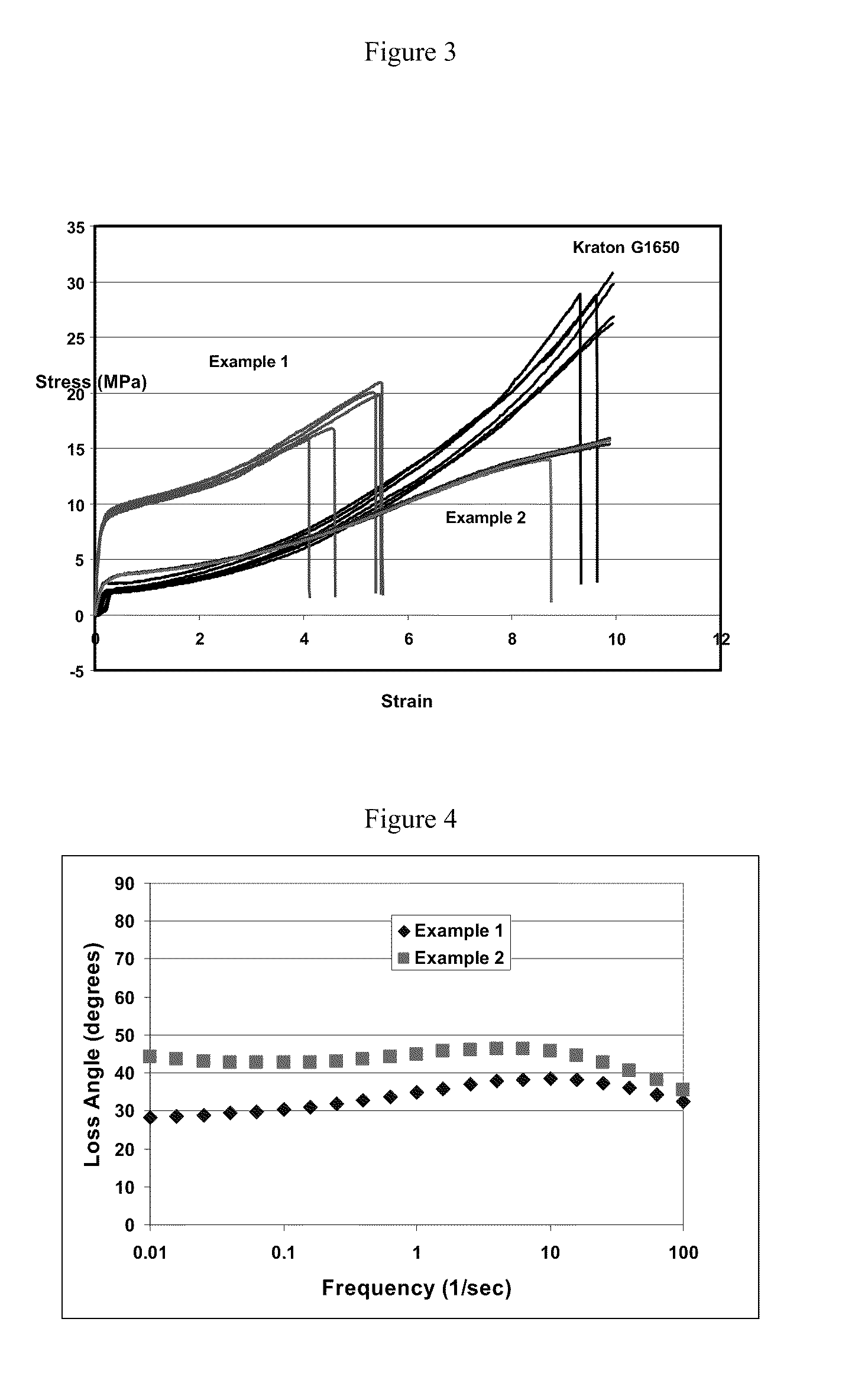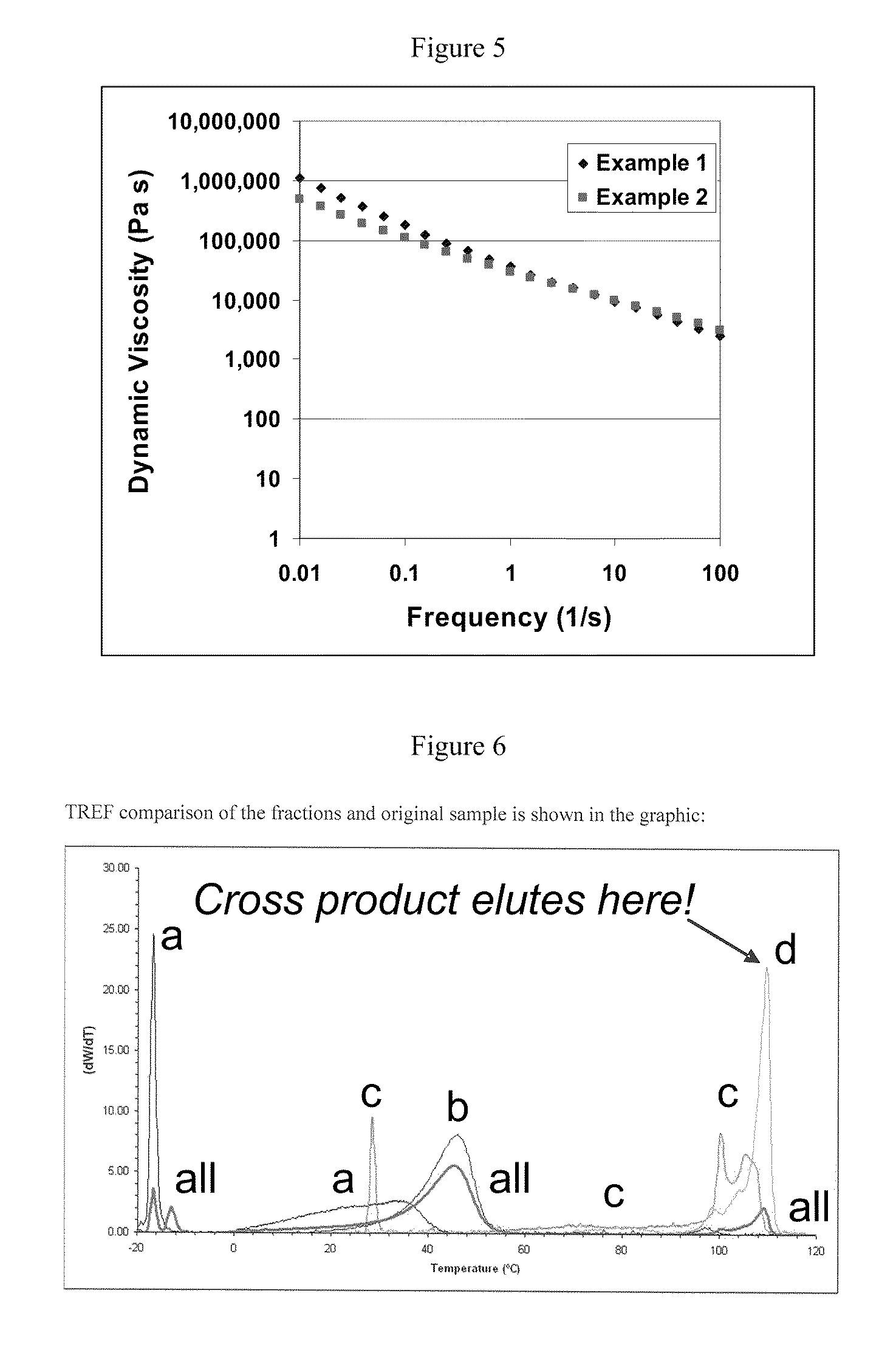Heterogeneous In-Reactor Polymer Blends
a technology of in-reactor polymer and blend, which is applied in the field of heterogeneous in-reactor polymer blend, can solve the problems of low impact strength, formation of undesirable high molecular weight materials, and unclear process applicable to copolymers containing isotactic polypropylen
- Summary
- Abstract
- Description
- Claims
- Application Information
AI Technical Summary
Benefits of technology
Problems solved by technology
Method used
Image
Examples
example 1
[0196]A 2 liter Autoclave Engineers zipperclave reactor was cleaned by washing with toluene for 15 minutes at 100° C. while stirring at 300 RPM. The reactor was dropped and the toluene poured out. The unit was closed back up and a steady nitrogen purge was started through the unit while it was heated up to the maximum temperature allowed by the steam system, approximately 120° C. Purging and heating of the unit was continued for a minimum of 1 hour.
[0197]After 1 hour of purging and heating, the unit was cooled down to room temperature while maintaining a steady nitrogen purge. 2 mL of 25 wt % tri(n-octyl)aluminum was cannulated into the unit using 1 / 16th inch tube with a continuous nitrogen purge. 600 mL of hexane were added using a sight glass. Stirring was started at 500 RPM. A solution of 0.64 mg of dimethyl zirconium bis(2-methyl-4-phenylindenyl) and 1.28 mg of dimethyl anilinium tetrakis(heptafluoro-2-naphthyl) borate were mixed and placed in a short section of ¼ inch stainless...
example 2
[0209]A 2 liter Autoclave Engineers zipperclave reactor was cleaned by washing with toluene for 15 minutes at 100° C. while stirring at 300 RPM. The reactor was dropped and the toluene poured out. The unit was closed back up and a steady nitrogen purge was started through the unit while it was heated up to the maximum temperature allowed by the steam system, approximately 120° C. Purging and heating of the unit was continued for a minimum of 1 hour.
[0210]After 1 hour of purging and heating, the unit was cooled down to room temperature while maintaining a steady nitrogen purge. 2 mL of 25 wt % tri(n-octyl)aluminum was cannulated into the unit using 1 / 16th inch tube with a continuous nitrogen purge. 600 mL of hexane were added using a sight glass. Stirring was started at 500 RPM. A solution of 0.48 mg of dimethyl zirconium bis(2-methyl-4-phenylindenyl) and 0.96 mg of dimethyl anilinium tetrakis(heptafluoro-2-naphthyl) borate were mixed and placed in a short section of ¼ inch stainless...
PUM
 Login to View More
Login to View More Abstract
Description
Claims
Application Information
 Login to View More
Login to View More - R&D
- Intellectual Property
- Life Sciences
- Materials
- Tech Scout
- Unparalleled Data Quality
- Higher Quality Content
- 60% Fewer Hallucinations
Browse by: Latest US Patents, China's latest patents, Technical Efficacy Thesaurus, Application Domain, Technology Topic, Popular Technical Reports.
© 2025 PatSnap. All rights reserved.Legal|Privacy policy|Modern Slavery Act Transparency Statement|Sitemap|About US| Contact US: help@patsnap.com



